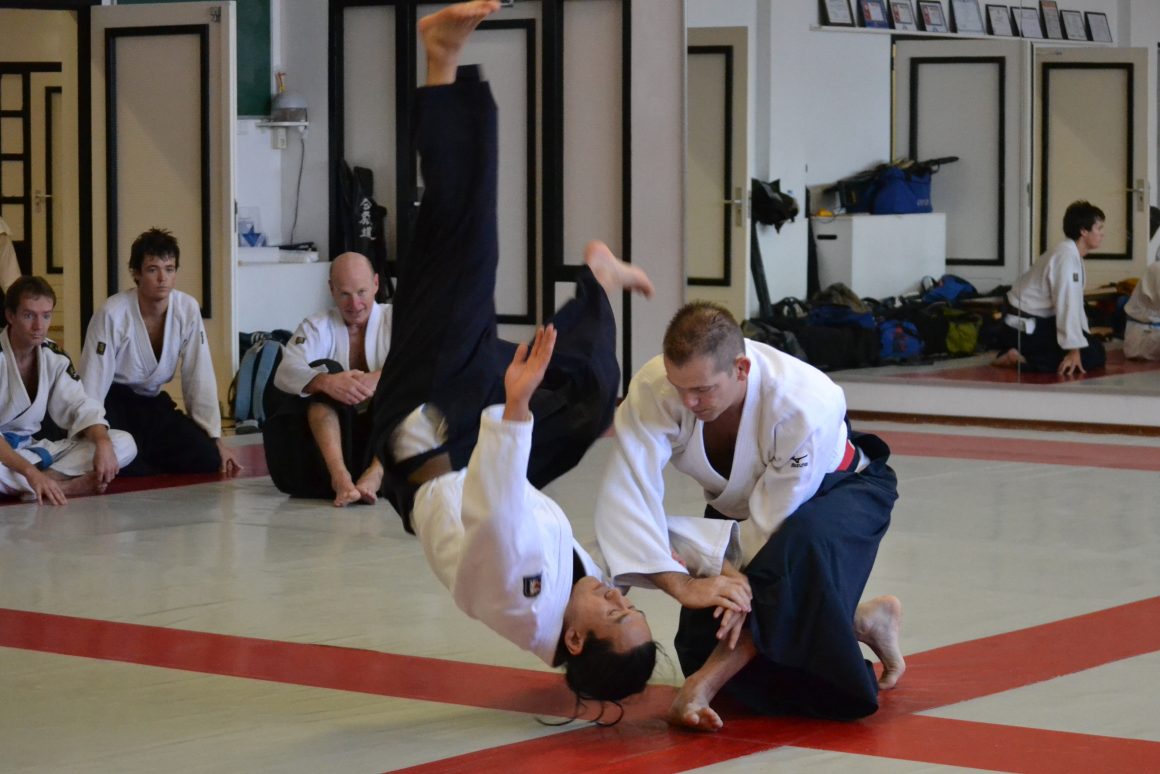
Aikido instructor discusses philosophy of defence
By Tommy Osborne, March 21 2017 —
Aikido has gained popularity in recent years. The martial art originates from Japan and primarily focuses on defence and using an opponent’s strength against them. The University of Calgary offers the chance for students to learn Aikido through the Aikido club. The Gauntlet spoke with Frank G. Barta Frantisek — a sensei who teaches a class through Active Living — about the art of Aikido and the philosophy behind this ancient martial art.
The Gauntlet: Can you explain what Aikido is all about?
Frank G. Barta Frantisek: Mystery. The idea caught my attention because instead of defending yourself, you are blending with the attack. Aikido is based on 20 [different] martial arts. When you study the technique, you learn technique A, B, C, D — but then [we want you to] forget it and just use your intuition. If you don’t get too scared of violence, it’s an opportunity to be creative.
G: So it’s the philosophy of understanding the fight?
F: Yes. It is very practical, since the Japanese are famous for being very practical. When you look at Japanese art it always has to have a practical aspect to it.
G: What makes Aikido different than other martial arts?
F: Aikido is based on 20 martial arts. So you have a little bit of all of them. My first instructor was a guy from Nova Scotia and he took it almost like a religion. We meditated for 20 minutes, stretched for 20 minutes and then did the techniques. Japanese masters, on the other hand, practise right away and don’t talk — they just do it. It can be addictive to start talking too much, but you just have to do it and experience it.
G: Would you say Aikido is more about intuition and going with the flow?
F: It’s dangerous to try to have a definition. Aikido is still evolving and that’s how I see it — it’s evolutionary. The emphasis is always on this duality between physical and mental or spiritual. Like Yin and Yang, you have both. You can’t be good without bad and bad without being good, so you don’t get upset when someone is nasty. You’re neutralizing [the negativity].
Aikido is both a female and male energy. This kind of energy is magic to me. The idea is that you learn one or two or three or four techniques and you try to develop intuition for them. You don’t try to remember the technique. Intuition means that you act spontaneously — you cannot think. The flexibility [gained from practising Aikido] is unbelievable and you develop some special techniques just when you breathe. Healing comes out of it too.
G: So Aikido is also a healing process?
A: For sure. You use it for healing also. Just like the Chinese use the pressure point massages — [we] use the same thing. That’s how we heal our injuries.
G: Does Aikido enforce and teach self-discipline?
F: What I found out is that Aikido is so nasty when you see the real technique behind it and how [it] came from dangerous martial arts. Aikido is about pinning, but the real original technique involved breaking limbs like shoulders and elbows. Once you see this dark side, that’s where the idea of ethics comes in. It’s good for practice, you learn how to yield. The only way to cope with a problem is to learn to relax. You understand violence in a different way — that’s the magic of Aikido.
G: Would you say that any of the lessons you learn through Aikido could apply to regular life?
F: You use it where you need it. I learned how to use Aikido and resolve conflicts. It has that mental aspect because it emphasizes that you cannot generate power from your hara [spiritual core] if you are stressed. It’s always a reminder that you choose how you use it. Just by learning the technique and the nasty parts, is becoming aware of how much damage you can make.
G: What would you tell university students interested in learning Aikido?
F: Come for one or two classes and decide if you want to register that way. Then you know and you’ll get addicted as I did.
For students interested in learning Aikido at the U of C, the Aikido club will offer a course from May 8 – Aug. 12. Students can enrol in the class through the Active Living website.
